This year we have been treated to several conjunctions -- times of picturesque planetary sharing in the same section of sky. This photo shows a young Crescent Moon cozying up to Venus, which has been dominating the twilight western sky recently.
Here is a closer view of the pair, where some of the Moon's craters are visible. Also, one can see that the bright dot for Venus is slightly elongated, showing that it, too, is a crescent. (For more information on that phenomenon, see the Pre-Dawn Crescents blog entry.)
Around June 30, Venus and Jupiter had a very close encounter, being only 0.3° apart in the sky. One science writer explained the visual proximity by pointing out that one could hide both of them with a chopstick held at arm's length. (He was right; I tried it.) The house across the street from us provided a nice perspective of how very close the planets were in the sky.
And not just the planets themselves. One of the most rewarding aspects of photographing a close-proximity Jupiter/Venus conjunction is getting a picture showing 6 planetary bodies in the same shot: the two planets plus four of Jupiter's moons:
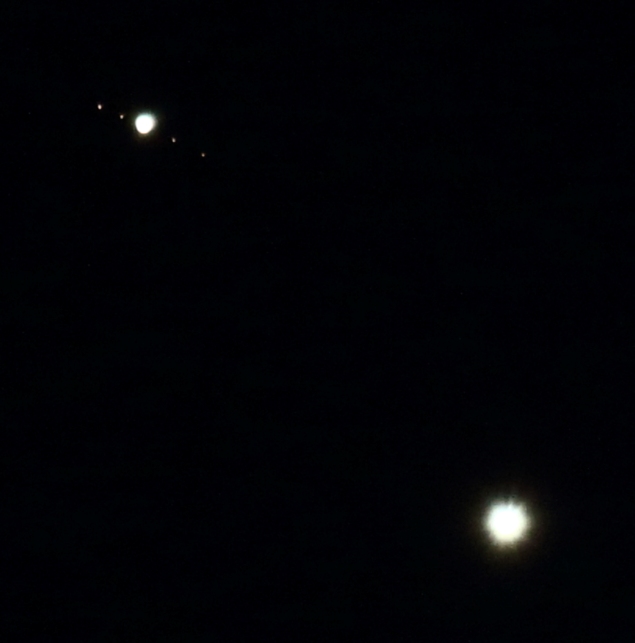
Here is a Venus-Mars-Uranus-Moon conjunction forming a nice triangle, although it's harder to see Uranus because the planet is rather dim from its vast distance well beyond the orbit of Saturn.
(Funny story: I didn't realize I was including Uranus in this shot until I later examined a sky chart for that day. When I pulled the photo file from my archives, sure enough -- there was Uranus, right where it was supposed to be.)
Have you ever wondered why there are so many planetary conjunctions? After all, there are only 8 major planets, and the sky is very big. How can there be so many visually-close encounters between the planets? The answer is the Ecliptic. When we look up into the night sky, there is an imaginary line called the Ecliptic, made visible below as a dashed line in the Star Walk app's view of the Venus-Mars-Uranus-Moon conjunction photo:
The planets and our Moon always tend to cluster near that line, thus providing plenty of opportunities for close encounters. The ancients could not figure out why this was the case; however they knew that for an eclipse to happen, the moon would have to be crossing the line -- hence the name, "Ecliptic." What is that magical line? It's really nothing more than the orbital plane of the solar system seen edge-wise.
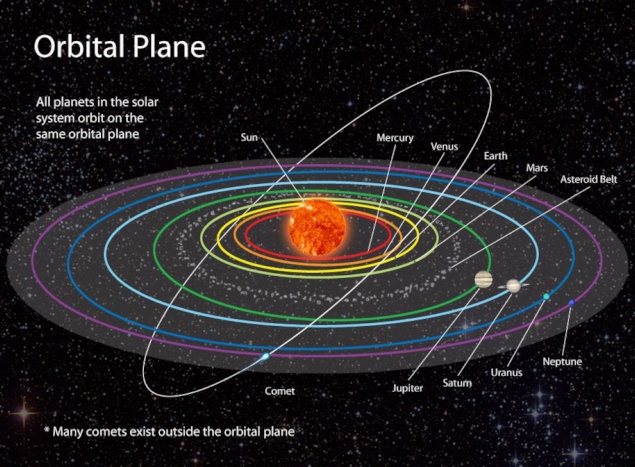
Source page: http://education.nationalgeographic.com/media/orbital-plane/
Image file: http://media.education.nationalgeographic.com/assets/photos/000/285/28546.jpg
We never get to see this oblique viewing angle ourselves, because we are stuck inside that virtual disk. So, as we gaze out at the other planets and the Sun, they are all essentially along a line -- the Ecliptic.
Of course, if every planetary orbit was on exactly the same plane, we would always see them perfectly aligned, like this:
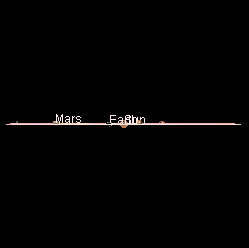
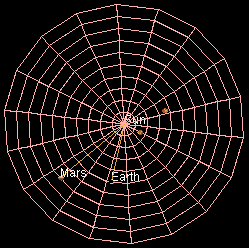
Source page: https://en.wikipedia.org/wiki/Ecliptic
Image file #1: https://en.wikipedia.org/wiki/Ecliptic#/media/File:Ecliptic_plane_side_view.gif
Image file #2: https://en.wikipedia.org/wiki/Ecliptic#/media/File:Ecliptic_plane_top_view.gif
Instead, we see the planets above and below that line at different times since their orbits around the Sun are all inclined slightly differently than ours. Here is a view from a star chart program that shows it well. The green line is Earth's orbit; observe how the other planets' orbits are not quite aligned with ours.
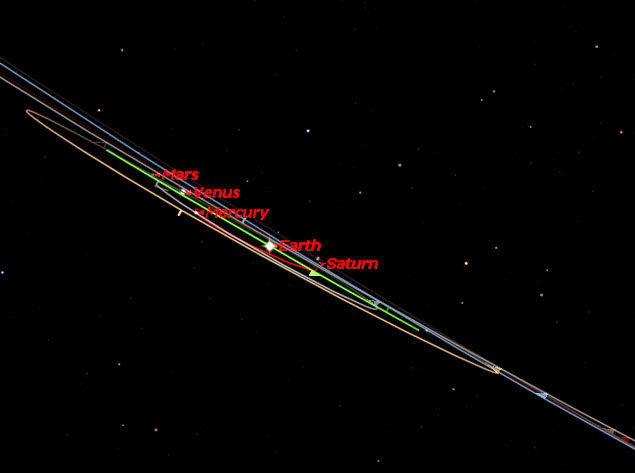
Source page: https://infinitewell.wordpress.com/tag/planetary-alignment/
Image file: https://infinitewell.files.wordpress.com/2008/09/orbital-plane-1.jpg
That allows for lovely patterns like this triangle of Venus, the Crescent Moon, and Mercury from the Tax Day Conjunction blog post:
Here is where the Ecliptic was on that evening:
So, there you have it; planetary movement in a nutshell. (Well, more like "...on a dinner plate.") Pardon me if you already knew everything about the Ecliptic and Solar System's orbital plane. But I often say, "Wow; I learn something new every day." For some of you, perhaps this was your day to have the planets' motions in the sky suddenly make more sense.
If you like these conjunction photos, I posted some more on Flickr (slideshow).
